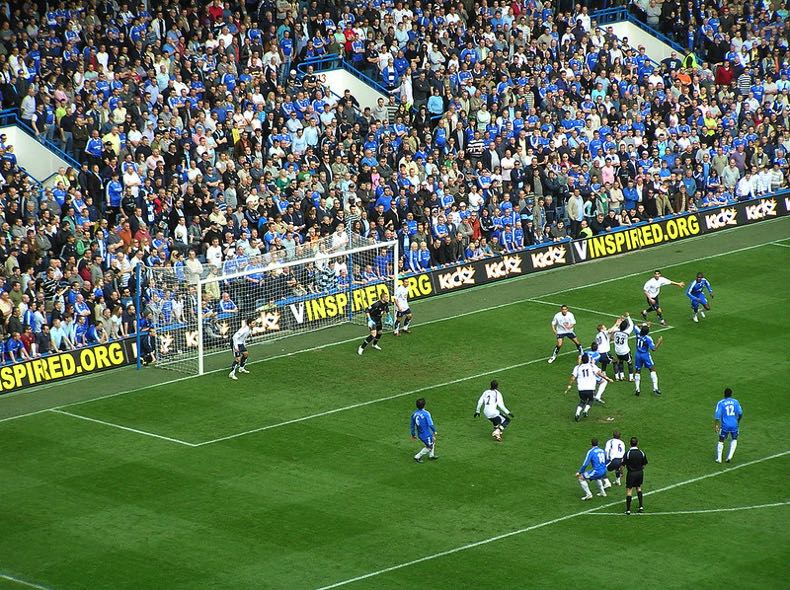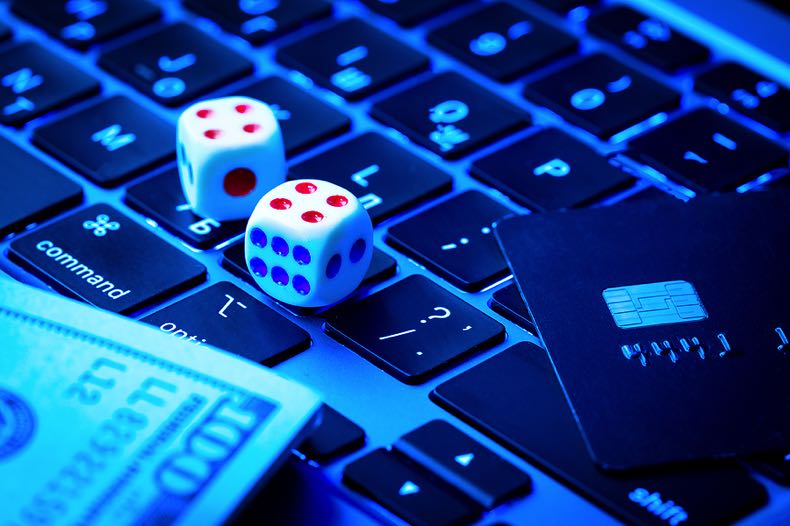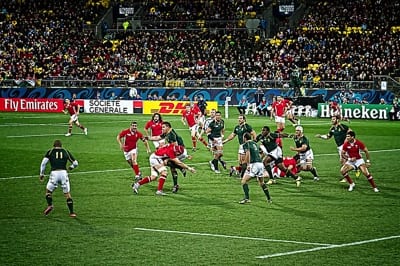
Elsewhere on this site you can read a general article about Spot the Ball competitions and how they work. One of the interesting quirks that you’ll read in that article and which we’re going to go into more detail over here is the fact that such competitions don’t use the actual location of the ball. Instead, a panel of judges decide on where they think the ball is likely to be in the photo that is chosen for the competition, with the exact pixel of the centre of the ‘ball’ that they choose being the location used to decide who has won.
There are numerous reasons why a panel of judges is used rather than the original location of the ball, not the least of which is the fact that it stops any possible cheating from the photographer that took the photo, or a coincidence whereby someone else who was at the ground took a very similar photograph. On top of that, there are rules and regulations put in place by the United Kingdom Gambling Commission around Spot the Ball competitions, which are designed to ensure that it is a game of skill, not a game of chance.
Spot the Ball Competitions Use Real Football Matches
When you look at a picture from a Spot the Ball competition, you might well think that it looks relatively easy to figure out where the ball is likely to be. You can follow the eye lines of players, as well as officials and spectators to get a sense of the location of the ball at any given moment. The photograph used, of course, is from a real game of football, so all of the people involved are genuinely looking either at or for the ball. The problem is, if one person can take a photograph of something then why can’t someone else?
That is the first problem that organisers of a Spot the Ball competition have to think about when they are deciding upon how to find a winner. It is not out of the realms of the possible that one or more of the attendees at the football match where the game took place have either photos or videos of their own that they can turn to in order to look to see where the ball was at the time that the photograph used in the competition was taken. This would obviously give them an unfair advantage over other people playing the game.
The fact that real football matches are used for the Sport the Ball competitions that you’ll see up and down the country adds a layer of complexity to the decision-making around where the ball is located. It needs to be fair for all punters, which means that no advantage should be able to be gained by someone either because they were in the match at the time or else were in attendance. If you weren’t either, you could imagine feeling hard done to if you discovered that someone took part in it or watch it live and then won.
It Has to Be a Game of Chance

The Gambling Commission is responsible for deciding the rules and regulations around all forms of betting and gambling that take place in the United Kingdom. When it comes to the likes of a Spot the Ball competition, it has to be considered to be a game of skill rather than a game of chance in order for the companies that run the competitions to be within the laws of the licensing that are set out by the UKGC. If there are more than three processes involved before a prize can be won, a remote casino licence will be needed.
If, on the other hand, your Spot the Ball offering involves an element of skill, knowledge or judgement then it is going to be considered to be a prize competition. The good news for organisations that offer Spot the Ball competitions is that the rules are different if is a prize competition, with the following being the UKGC’s wording on the matter:
Genuine prize competitions are free from statutory control under the Gambling Act 2005 and therefore do not require a licence.
The Gambling Commission is clear that a Spot the Ball competition is ‘more likely to be a prize competition than a lottery’ if ‘players have to apply judgement, skill or knowledge to match their own decision of where the ball is with that of [a] panel’. In other words, if organisers use a panel to decide where the ball is in the photograph then it means that they do not need to obtain any sort of licence in order to operate their game.
By using a panel to decide the location of the ball, Spot the Ball competitions become a game of skill of the person playing against the skill of professionals. That makes it different to one that is a matter of chance that you just happen to pick the spot that the original ball was in. It might seem like semantics, but it is an important legal definition that companies are bound by in order to operate. It also ensures that no one can ever know the original position of the ball, making the process much more fair and transparent.
Who Makes Up the Panel?
Now that you know that you’re not looking for the actual position of the ball but rather for the location that a panel has decided the ball is likely to be in, the next question that you will almost certainly be asking yourself is who makes up the panel. It is, of course, worth bearing in mind that the panel isn’t set in stone. Instead, the judging panel is made up of a rotating cast of experts. They aren’t convened to look at the picture until after the competition has closed, adding another layer of fairness and accountability to proceedings.
Here is a look at some of the people that have acted as judges for one Spot the Ball organiser in the past, alongside their profession at the time:
| Name | Expertise |
|---|---|
| Alain Goma | Former Professional Footballer |
| Andy Braithwaite | AFA Referee |
| Ari Mendonca | AFA Referee |
| Chloe Morgan | Professional Footballer |
| Ciaran Fitzgibbon | AFA Referee |
| Hugh Gilroy | AFA Referee |
| Jenna Schillaci | Former Professional Footballer |
| Joe Thompson | Former Professional Footballer |
| Leo Donnellan | Former Professional Footballer |
| Liam Walshe | AFA Referee |
| Matt Cannon | AFA Referee |
| Mathew Rea | AFA Referee |
| Nigel Hickes | MFA Referee |
| Peter Georgiou | AFA Referee |
| Renee Hector | Semi-Professional Footballer |
| Wendy Martin | Professional Footballer |
As you can see, regardless of who it is that turns up to decide upon the location of the ball on the picture that is used for the competition, there is a fair degree of expertise in the room. The judges are accompanied by an independent lawyer to ensure that it is as far as possible, with the group working together to mark where they think the centre of the ball would be. This information is used to decide upon the winner.
What This Means for Players

From the point of view of the players, the information about the ball not being the original one as well as the people that are responsible for deciding where the ball is means that things are slightly different to what you might imagine. In many ways, it as much about trying to get into the heads of the judging panel as it is about where the ball actually was in real life. That, of course, is especially hard if you’re not even sure who it is that makes up the judging panel. It is why it is a game of skill rather than one of chance in the first place.
The first thing to bear in mind is that what you’re being asked to do is hard. Not only do you need to figure out where about the ball is likely to be according to a panel, but you also need to figure out where the exact centre of that ball would be. The obvious question, then, is what would the panel be looking for to decide the location of the ball?
Think About Eyelines
The first thing that you’ll want to do is have a look at the eyelines of everyone in the picture, given that that is one of the key factors that the panel will have to work with. The thing to remember is that these are professionals, either players or referees, so they will know where they would be looking in that sort of situation. Whilst some players might be looking where they think the ball was or in a different direction entirely, if more than half of the people in the frame are looking one way then that is a telling factor.
Have a Look at the Videos
Most of the Spot the Ball competitions out there will upload videos of the experts discussing where they think the ball should be located. These can be extremely useful if you’re considering having a go at the ball’s location because they’re literally talking you through their thought processes. It gives you a really good sense of how the panel would be analysing each scenario and allows you to study their thinking. Whilst the panel won’t always be the same, they will have similar thought processes because of their professional experiences.
Put Your Own Lines on the Picture
One of the things that you’ll see from the panelists as they look at a picture and work to decide where the ball would be is that they will use rulers to analyse all sorts of information. Even just a few millimetres difference in the eyeline of one player over another can make a huge difference in terms of where they’re looking. Again, that is all that the judges have to work with so being precise about where you think a player is looking can be really important if you’re hoping to win the prize that is on offer.
Don’t Forget You Can Zoom In
Whilst the photograph that you’re asked to judge is relatively small, the panel are using a blown up version of it to reach their decision. You would be well-placed to make things as similar as possible for yourself before you make your selection, which will include getting a clearer sense of what is going on on the football pitch. The good news is that most computers allow you to zoom in on a picture, which will allow you to see things that you might not even have noticed when they were far away.
It Has Always Been This Way
In 2015, a player of Spot the Ball named Peter Cook contacted the company responsible for running the competition and discovered that they hadn’t paid out on the jackpot since September 2004. Back then, the competition used physical printouts of the photograph, as well as stick-on crosses that players could use to identify where they thought the ball was. Having spent around £1,300 in the pursuit of the £250,000 jackpot that was available at the time, Mr Cook felt that it was a ‘scam’ that it hadn’t been won for more than decade.
The most interesting thing as far as players will be concerned nowadays is the fact that Mr Cook knew that it was a matter of deciding where the judges thought the ball was as opposed to where it was in the original photo. That tells us that it has always been done like that, with the fascinating thing being that it was considered to be a game of chance back then and has only switched to become a game of skill as a result in more recent times. This had tax implications for the company that ran the game, Sportech, as well as licensing ones.